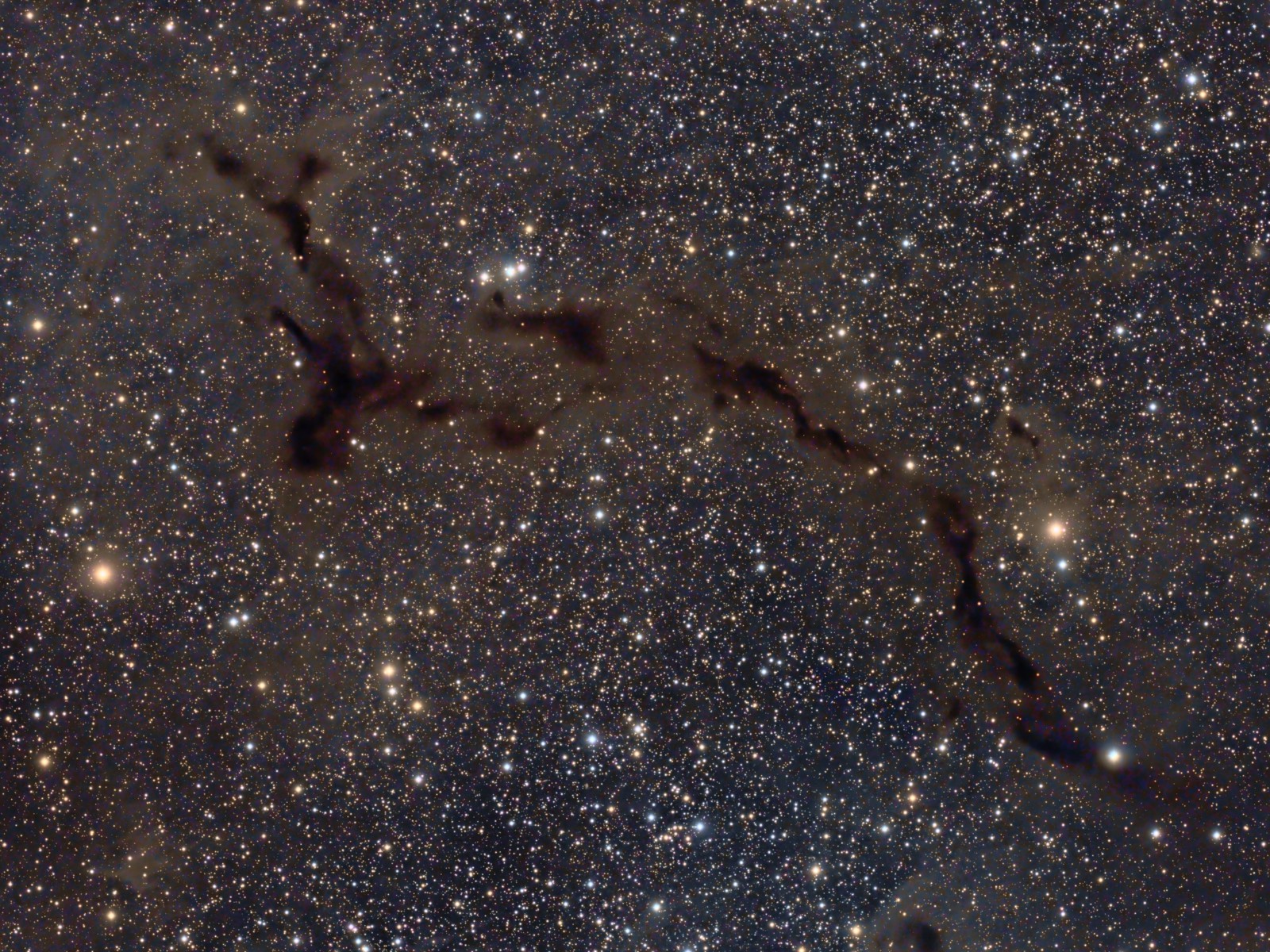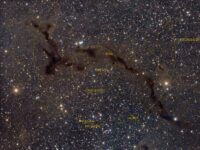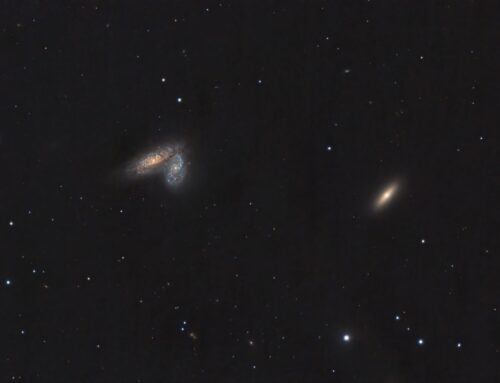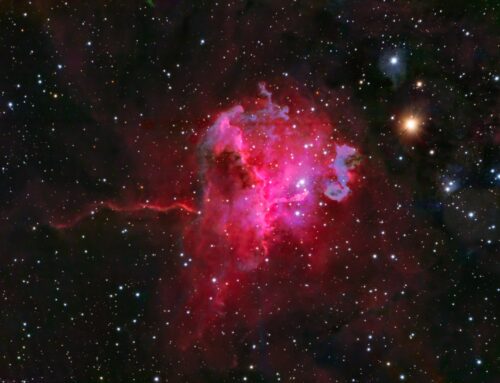B150
 Click image for full size version
Click image for full size version
September 3, 2022
Barnard 150 is a dark nebula in the constellation Cepheus. It is about one degree long (about two Moon widths). It’s sometimes referred to as the Seahorse nebula. It is made up of soot and dust within our galaxy. It appears dark because it is blocking out the light of stars behind it. The rich star field in which this object is set displays stars of many hues, which depend on their temperatures (blue and white are hotter; yellow and reddish are cooler).
Tekkies:
Acquisition, focusing, and control of Paramount MX mount with N.I.N.A., and TheSkyX. Focus with Optec DirectSync motors and controller. Equipment control with PrimaLuce Labs Eagle 4 Pro computer. All pre-processing and processing in PixInsight. Acquired from my SkyShed in Guelph. Very good transparency and average seeing. Acquired August 31-September 2, 2022, under moonless skies.
Sky-Watcher Esprit 150 f/7 refractor and QHY16200A camera with Optolong UV/IR filter
Tak FSQ-106 @ f/5 (530mm), QHY-367C Pro One-shot colour with Optolong UV/IR filter
113x5m OSC = 9hr25m
The WeightedBatchPreProcessing script was used to perform calibration, cosmetic correction, weighting, registration, local normalization, integration and Drizzle integration of all frames.
DynamicBackgroundExtraction was applied to the luminance and OSC masters.
Colour
Colour Calibration: ColorCalibration was used to calibrate the OSC master.
Linear Noise Reduction: NoiseXterminator was used to reduce noise in the background areas with settings Amount=0.9 and Detail=0.15
Stretching: HistogramTransformation was applied to make a pleasing yet bright image.
Luminance
Linear Noise Reduction: NoiseXterminator was used to reduce noise in the background areas with settings Amount=0.9 and Detail=0.25
Stretching: HistogramTransformation was applied to make a pleasing yet bright image.
Combining Luminance and Color Images
Luminance addition: LRGBCombination was applied to replace the lightness of the RGB image with the Luminance master.
Additional Processing
Nonlinear Noise Reduction: NoiseXterminator was used to reduce noise in the background of the image with settings Amount=0.9 and Detail=0.25.
Final Steps: Background and star brightness, contrast and saturation were adjusted in several iterations using CurvesTransformation with masks as required. ICCProfileTransformation (sRGB IEC61966-2.1; Relative Colorimetric with black point compensation) was applied prior to saving as a jpg.








Hi Ron,
You are so out of our league I’m really proud of you buddy ! Keep the dedication…
Gerry
Nice!